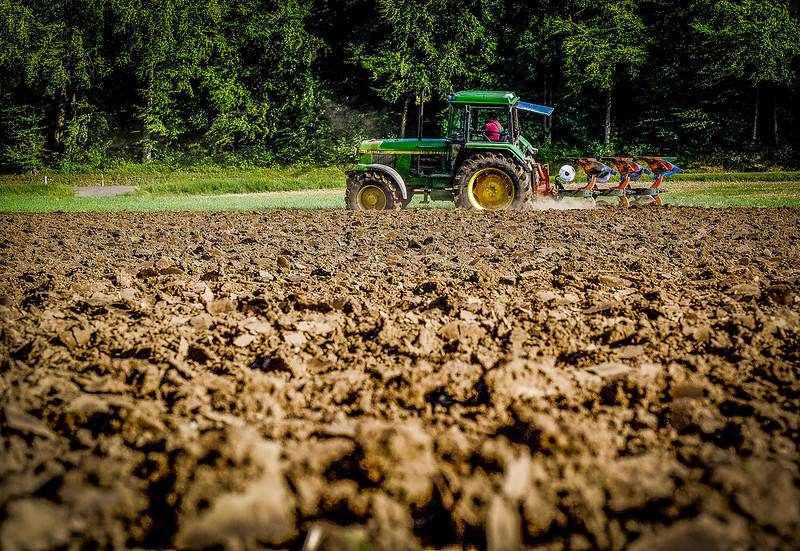New Farming Technology to End Agricultural Poverty
 The most common occupations in impoverished nations are in the agricultural sector. Inventors and mechanics around the world have developed new farming technology that will create sustainable agriculture, thereby saving the jobs of millions of subsistence farmers. This will bring an end to global poverty as impoverished communities will be able to increase their income and contribute to local and national economies.
The most common occupations in impoverished nations are in the agricultural sector. Inventors and mechanics around the world have developed new farming technology that will create sustainable agriculture, thereby saving the jobs of millions of subsistence farmers. This will bring an end to global poverty as impoverished communities will be able to increase their income and contribute to local and national economies.
Building Sustainable Agricultures
Agriculture involves cultivating soil to grow crops and rearing animals for the provision of food, wool and other products. These are some of the most vital commodities in terms of creating profits and the sustainability of mankind.
Many believe farming is a simple profession due to the alleged sustainability of agriculture. This is not the case because the farmlands face many challenges that make them unsustainable. Our food supply relies on the extraction of natural resources, and the methods behind this are what lead to soil erosion. These methods include the utilization of fertilizers and the tilling of the soil.
The implementation of fertilizer is meant to eradicate harmful weeds, insects and fungi that will inevitably grow and spread on all grounds and ruin all the farmers’ hard work. The fertilizer chemicals are known to be the cause of dead zones. These are collapsed aquatic ecosystems that are created when chemical runoff goes to the ocean and creates an excess of nutrients. The nutrients create algae that generate low oxygen and this harms aquatic life. The tilling of the soil puts more oxygen and nutrients that deplete organic matter. This creates a loose soil structure that increases soil erosion and when water washes away the soil the lands are unfit for agriculture.
This unsustainability is why farmers need new technology to move forward.
Drone Technology
Drone technology is one of the solutions for farmers to enhance resource management when the demands of food production rise. These unmanned aerial vehicles use vigorous data analytics to receive successful cognizance in the crops by using GPS coordination. The drones scan large areas of farmland and the scanning determines the proper seeding instructions by taking into account the elevation, slope and improved crop models.
Data collected by the drones can determine the fertility of crops, permitting farmers to reduce wastage and plan irrigation systems. In the event of a natural disaster, the drones can assess the damage in ways that cannot be done manually. This technology’s effectiveness has been proven when drone technology reduced 52% of herbicide use on a soybean farm in Brazil.
The senseFly eBee X maps 1,200 acres of fields with precise images that are analyzed to find weed infestations and thresholds in a matter of hours. The detailed results decide the amount of herbicide needed, thereby preventing overuse. Drone technology is only one of the automatic farming technologies.
AutoCarts
AutoCarts have become the next generation of farmers. Labor shortages that contribute to global poverty can be combated with autonomous farming technology. Operating the tractors and grain carts can be challenging when the help available is the inexperienced and elderly. This is where the AutoCart comes in.
When it is time to empty the grain bin, the self-sufficient tractor is called from an app on a smart device. The tractor controller is reached through a cellular signal with a range of a 900 megahertz radio. Once the tractor comes in range it is placed in “sync mode” with a wifi signal so that the tractor and grain cart can copy the combine’s field maneuvers. After the combine dumps, the tractor and grain cart returns to the origin point.
The technology is meant to autonomously unload while the operator continues to have control. AutoCarts are meant to have a simple function with a switch that toggles between manual and autonomous and the complete kit will have safety systems, equipment hardware and installation instructions.
The new farming technology will make labor simpler, enabling the world’s poor to lift themselves out of poverty. Impoverished nations worldwide are left with no other occupation other than farming and with the limited resources they have, they will need all the help they can get. Traditional farming has its drawbacks with the herbicides harming the environment and the soil becoming unsuitable for farm use. Technological solutions like the GPS-guided drones and automated tractors address these drawbacks by analyzing the acres for genuine planting areas and aiding farmers with hard labor. Through the advancement of new farming technology, agricultural poverty and challenges can be overcome.
– Shalman Ahmed
Photo: Flickr
